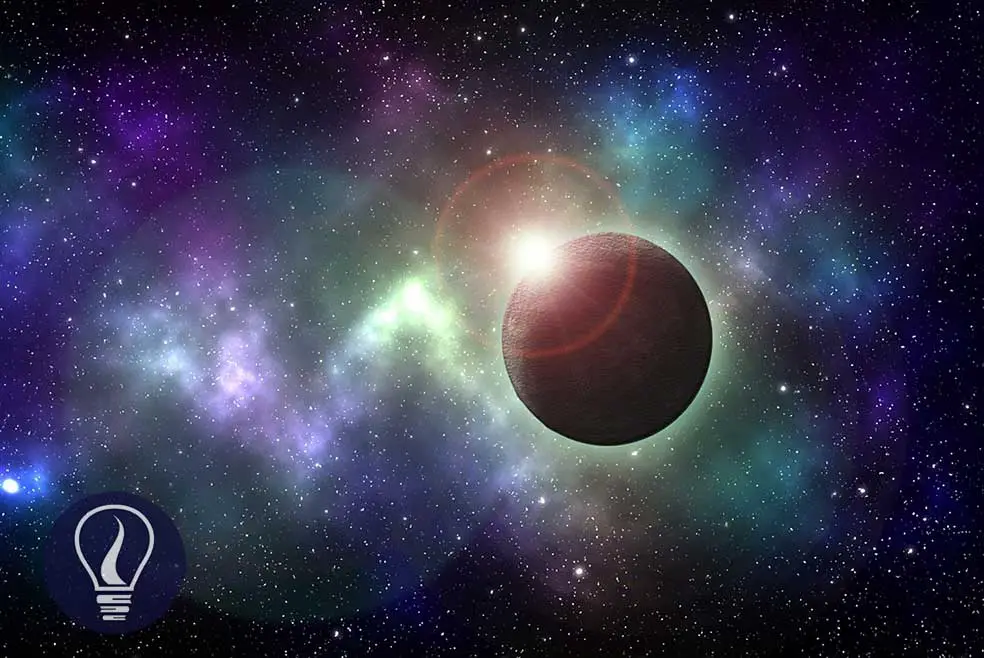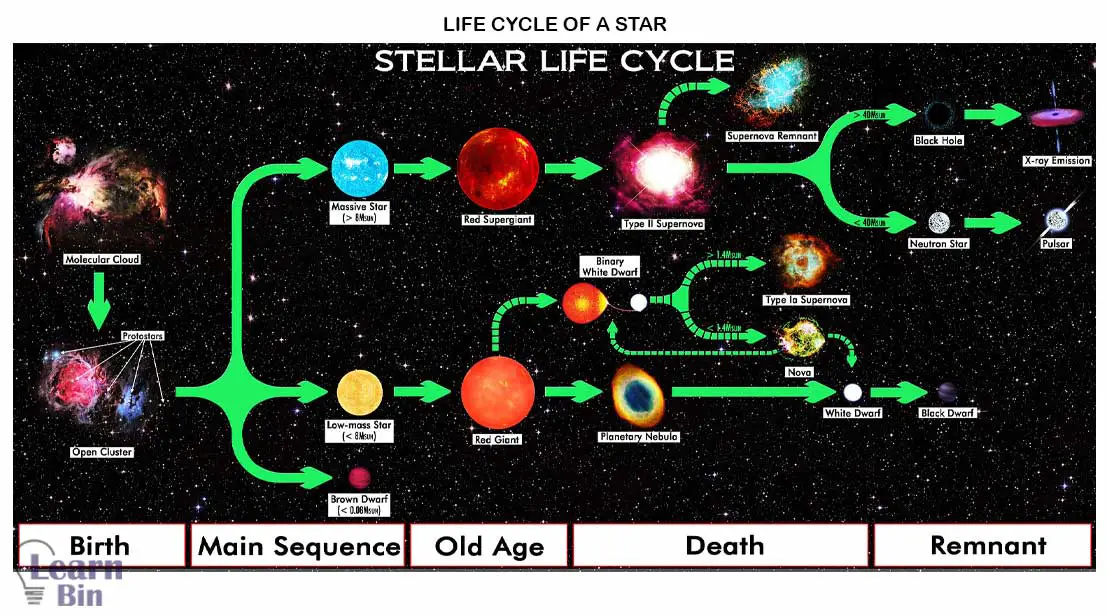More results...


Neutron stars are the densest thing in the universe except for black holes. They are almost made out of neutrons. It has extremely high densities and mass with only a few kilometers (10 - 20 km) in diameter.
Neutron stars have densities around 1017 kg/m3 and have 1.18- 1.97 solar masses. That means the teaspoon amount of neutron star matter would be massive about billions of tons. In another way, it looks like an object with two times the mass of our sun is squeezed into an object with 10 – 20 km. So, the gravity on the surface of the neutron star is about 1011 times stronger than the gravity that we experience on earth. Due to this higher gravity, the mountains on the neutron stars can only be a few millimeters in height.
Neutron stars are born with the death of a massive star. Generally, neutron stars are what remains after the supernova explosion which is known as the death of a massive star. The hot plasma in the stars is pulled inwards by gravity. Due to this gravity, what is inside the star squeezes together. Inside the star, nuclear fusion is occurring.
Nuclear fusion is the process that forms heavy nuclei by joining lightweight nuclei. In the stars, Hydrogen fuses into Helium. This fusion releases lots of energy and this energy acts against gravity. As long as this balance exists, stars are stable.
But eventually, all the Hydrogen is fused into Helium. So, it is the beginning of a dying star. Medium stars like our sun burn helium into carbon and Oxygen and eventually become white dwarfs. When the massive stars ran out of Hydrogen, the fusion stops, so the star started to be cooling.
Now the upward pressure is decreased, and gravity pushes the star toward the core. Due to this enormous gravity, Helium fused with heavier elements; Helium fused to Neon, Neon fused to Oxygen, Oxygen fused to silicon, and finally, silicon fused to Iron.
The outer layers of the star swell by a hundredth of times due to this fusion. Finally, iron comes. Iron is nuclear ash. It has no energy to give, and it will no longer fuse. And now, the iron core is pressed by enormous pressure by gravity. Now the core of this dying star is a giant iron ball the size of the earth. If the iron cannot be fused further, what happens then?
Ok, let’s look at the atomic level of the iron core. As we know, atoms are made out of electrons, protons, and neutrons. And there is 99% of an atom is an empty space. Because of the enormous pressure of gravity, electrons and protons are fused into neutrons. And these neutrons are collapsed into the nuclei of atoms. All the nuclei are squeezed together and now it is like a giant atomic nucleus.
The core is squeezed into a ball with a diameter of 10 – 20 km. But not just the core, the whole star will implode. So, the whole star collapses suddenly at 25% of the speed of light. This implode bounces a shockwave that causes to the star explode. This explosion is called the “Supernova explosion”. This explosion outshines the entire galaxy. Now, what remains after a supernova explosion is called a “Neutron star”.

When the iron core collapses, the size of the star is decreased enormously. So, the rotation of the star is increased rapidly as a result of the “conservation of angular momentum”. At least a neutron star can rotate 60 times per second. At the same time, the magnetic field lines of the star are closer together with the collapsing of the star.
Due to the conservation of flux, this results in an incredibly strong magnetic field to the neutron star. These magnetic fields are the strongest magnetic fields in the universe. The magnetic field of a neutron star is around 1011 Tesla, and it is quadrillion times stronger than the Earth’s magnetic field. (0.00005 Tesla)
| Mass (solar masses) | 1.18 – 1.97 |
| Density (Kg/m3) | 3.7 × 1017 – 5.9 × 1017 (crust to center) |
| Size (Diameter in Km) | 10 – 20 |
| Gravity (ms-2) | 2 × 1012 |
| Pressure (Pa) | 3.2 × 1031 – 1.6 × 1034 (crust to center) |
| Surface temperature (K) | 600000 |
| Magnetic field (Tesla) | 104 to 1011 |
Neutron stars also have an atmosphere, crust, and core as planets. Scientists predict the atmosphere will be made out of mostly Hydrogen and Helium. The thickness of this atmosphere is only about 10 cm. This atmosphere is dense as a diamond (3.5 g/cm3) and it has a temperature of around 600000 Kelvin.
The atmospheric pressure is more than ten times that found at the center of Earth. The size of an atmosphere is proportional to the temperature. Also, the size of an atmosphere is inversely proportional to the surface gravity. Therefore, neutron stars have extremely thin atmospheres.
The crust of the neutron star is also hard. The thickness of the outer crust is a few hundred meters and it is composed of atomic nuclei and free electrons which are rearranged in a crystal lattice. Mostly from iron which is leftover from the supernova explosion. The next layer is the inner crust. Here, protons are merged into neutrons. At the base of the crust, nuclei are close together and they start to touch.
Going deeper, protons and neutrons are rearranged and make long cylinders or sheets of nuclei. At the core of the neutron star, the pressure is so extreme and the enormous nuclei are formed with millions and trillionths of protons and neutrons.
This sheet or cylinder structure of nuclei is arranged like spaghetti or lasagna, so physicists called it nuclear pasta. Nuclear pasta is so dense, and it is denser than atomic nuclei. And basically unbreakable. Which might be the hardest thing in the universe.
The composition of the inner core of the neutron star is still a mystery, but scientists predict the nuclear pasta will become a sea of quarks due to the enormous pressure from the outer layers. This sea of quarks is called quark-gluon plasma. Some of the quarks may form strange quarks which have extreme properties. If strange matter exists, it can be the most dangerous stuff in the universe.

Illustration of the life cycle of a star by R.N. Bailey, CC BY 4.0, via Wikimedia Commons
Illustration of a neutron star by eli007 from Pixabay
Astronomy.swin.edu.au. Neutron Star | COSMOS
Imagine.gsfc.nasa.gov. Neutron Stars, Pulsars, and Magnetars - Introduction
Astrosplash. Neutron Stars
Encyclopedia Britannica. neutron star | Definition, Size, Density, Temperature, & Facts
Learn about Big bang theory. The Big Bang Theory - The Beginning of Everything